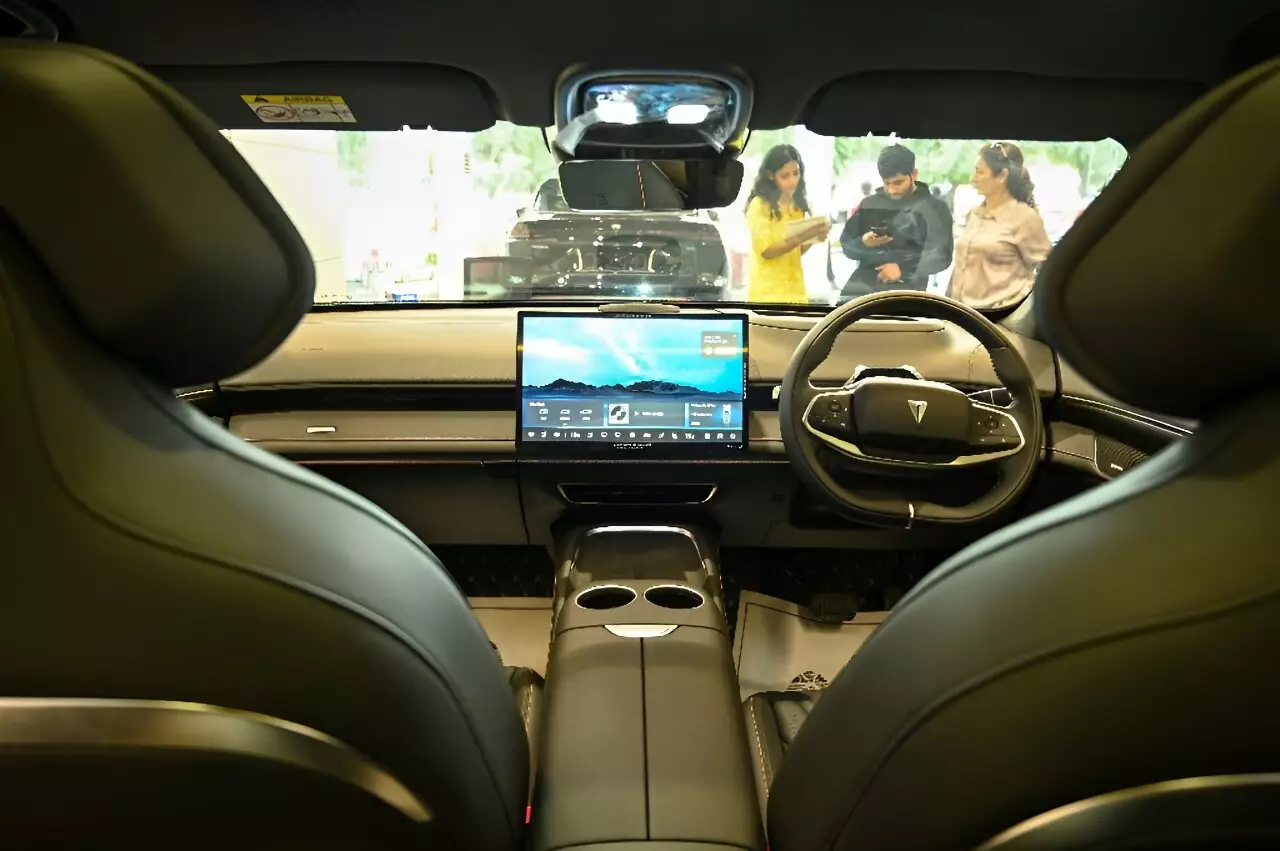In a dramatic turn of events, Nepal is witnessing a transformation in its transportation landscape, one that was almost unimaginable just a decade ago. The challenges posed by unreliable electricity—where more than four out of five people lived without access to power—are now being countered by an influx of electric vehicles (EVs), showcasing progress that aligns with the country’s growing hydropower capabilities. Surendra Parajuli, a taxi driver in Kathmandu, epitomizes this shift. His switch to a battery-powered BYD Atto 3 symbolizes not just personal adoption, but a broader revolution that is challenging the fossil fuel dependence that has plagued the nation for years.
The profound changes in Nepal’s energy landscape can be attributed to a significant investment in dam construction, which has greatly boosted the nation’s electricity generation. Previously, the lack of reliable electricity severely limited economic opportunities, but today, advancements in hydropower have enabled about 95 percent of the population to access electric power. This newly achieved energy independence is pivotal as it allows the country to harness its natural resources rather than rely on imported fossil fuels, which can be costly and disruptive given geopolitical tensions.
With the advent of affordable and accessible electricity, the market for electric vehicles in Nepal is experiencing exponential growth. Official estimates reveal that over 40,000 electric vehicles are now navigating the streets of this densely populated, mountainous country. This figure is expected to swell further, with a notable increase in imports over the last year. The simultaneous rise of EVs and hydropower could pave the way for a sustainable transportation culture that prioritizes environmental responsibility.
Interest in electric vehicles is palpable among the population. Potential buyers like Yajya Raj Bhatt express a newfound sense of independence, highlighting how the availability of electric options has broadened their transportation choices. Before this surge, reliance on petrol-powered vehicles was practically the only option, trapping consumers in a cycle dictated by fuel prices and availability. Now, the capacity to drive electric cars represents a pivotal leap toward autonomy, aligning with Nepal’s ambitions to simultaneously improve accessibility and lower emissions in one of the world’s most polluted urban areas.
Economic Implications and Future Prospects
The economic implications of adopting electric vehicles are significant. As petrol vehicle reliance wanes, the government anticipates savings of approximately $224 million by reducing expenditures on fuel imports. With already established plans to expand installed power capacity from 3,200 to 30,000 megawatts in the coming decade, Nepal’s shift towards a clean energy economy is not just an environmental boon – it holds the promise of economic sustainability as well.
The government’s aspiration to make electric vehicles account for 90 percent of all private vehicle purchases by 2030 is aggressive but reflects the urgency of transition in response to worsening air quality. Kathmandu, infamous for its pollution, must address its alarming status among the world’s most polluted cities urgently. By investing in the electric vehicle infrastructure and promoting green energy, the government aims to enhance not only public health but also the overall quality of life.
However, the rapid embrace of electric vehicles is not without its challenges. While the shift to EVs is environmentally preferable, concerns regarding the ecological ramifications of increasing hydropower projects loom large. Activists warn that the construction of new dams threatens to disrupt delicate ecosystems and biodiversity hotspots, as areas previously reserved for protection may become vulnerable. Furthermore, with the amplified severity and frequency of floods and landslides stemming from climate change, the stability of hydropower infrastructure itself comes into question.
Adding to the complexity, the current approach to managing the life cycle of electric vehicles, particularly concerning electronic waste, raises eyebrows. With the lithium-ion batteries used in EVs posing potential health hazards, there is an urgent need for a comprehensive recycling plan to mitigate the impending waste crisis. Stakeholders like Nabin Bikash Maharjan from Blue Waste to Value underline a troubling oversight: the government’s short-term focus neglects the pressing matter of electronic waste management in the long run.
While the electric vehicle boom in Nepal signifies a momentous shift towards green energy, it unearths a tapestry of complex challenges. A strategic balance must be struck between advancing economic and environmental goals, ensuring that growth does not come at the cost of the very ecosystems that sustain the nation. Without a proactive approach to the side effects of such a rapid transition, the ambition to become a net-zero greenhouse gas emitter by 2045 may remain an unfulfilled promise. The coming decade will be crucial; it is a critical juncture that necessitates foresight and planning to navigate the road ahead effectively.

